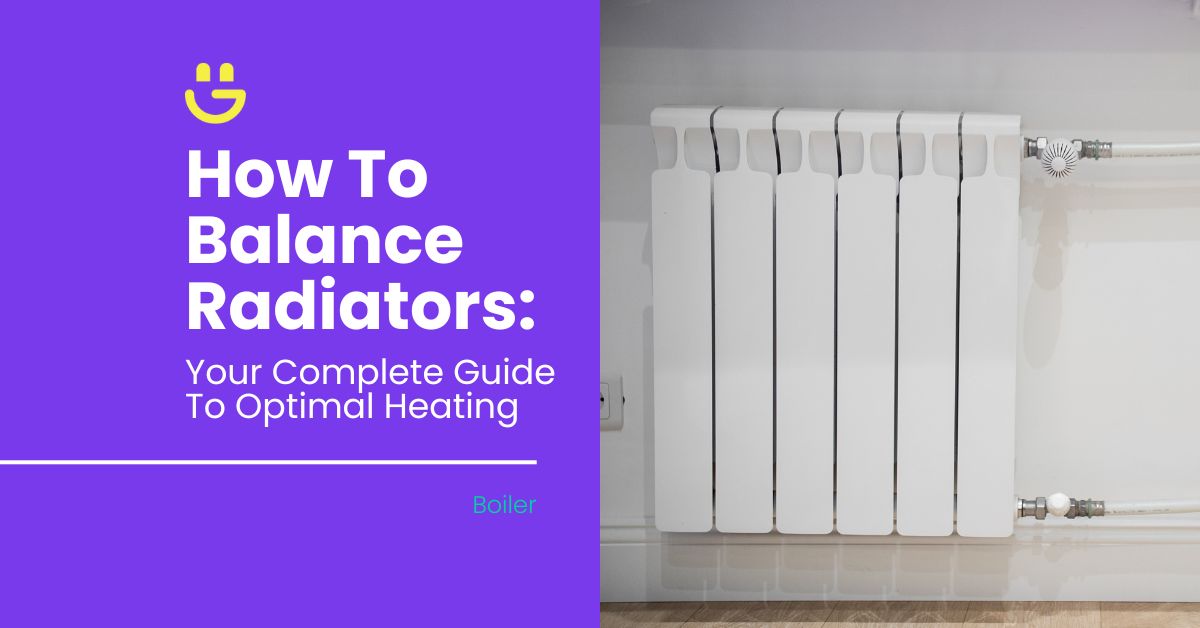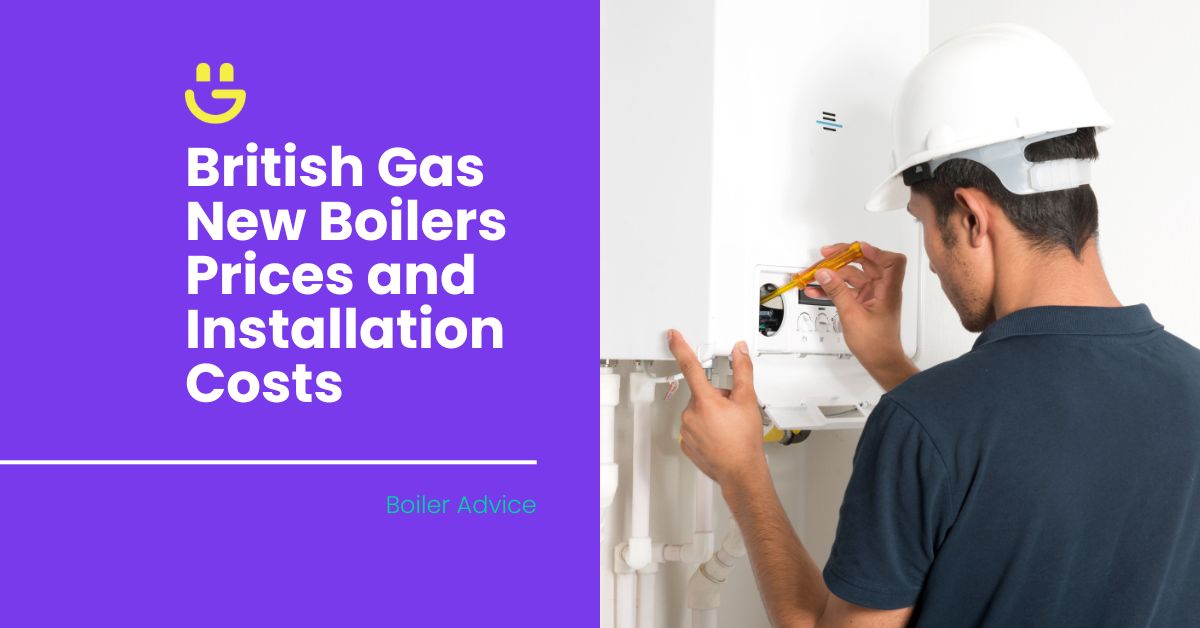Last Updated on March 18, 2025
If you want to keep your central heating system running smoothly and stay cosy, balancing your radiators is the way to go. You might not think about it often, but it’s super important! By balancing the hot water flow to each radiator in your home, you ensure they all get the right amount of heat, which makes a big difference!
If you’re a homeowner, you’ve probably had either very hot or very cold spots on your radiator. But, when you balance them, you ensure heat is distributed evenly throughout your house. Your living space will be more comfortable and your lifestyle energy-efficient thanks to the consistent temperature in each room.
Eco Happy will walk you through how to balance radiators and get the best possible heat distribution throughout your home. We’ll also talk about the advantages of balancing radiators, which include lower heating bills and increased energy efficiency.
Contents
Understanding Radiator Balancing
Radiator balancing is the process of regulating the flow of hot water to each radiator so that heat is delivered evenly throughout your home. This prevents certain rooms from getting overheated while in others it may seem like your radiator is not working at all!
When your radiators stop working efficiently, you have two options: bleed your radiators or balance them.
Bleeding involves removing trapped air that may prevent radiators from heating up correctly. This is a straightforward DIY job that requires opening the bleed valve with a radiator key and allowing air to escape.
Balancing your radiators can be a better option if they provide inconsistent heat. This involves using the lockshield valve to change the hot water flow to each radiator (more on this later). This makes your living areas more comfortable while lowering energy waste and radiator heating costs.
Why radiators need balancing
Hot water flows from the boiler to the radiators in a central heating system, distributing heat to all the radiators. But, depending on the system’s pipe length, size, and location, the warm water may not be uniformly distributed. This can make specific radiators hotter than others, causing temperature imbalances throughout your house.
When radiators are not balanced, warm water will flow more readily to those nearest to the boiler or with a more direct pipe path. These radiators heat up faster and achieve greater temperatures. However, the radiators that are farther away or have more obstructions in their pipe route will receive less warm water and stay completely cold.
This uneven distribution of heat is not only uncomfortable but it also wastes energy. You could find yourself opening windows to counteract one or two radiators that are hotter than the rest. This wastes the heat your boiler provides. Heating the entire room will require more effort from the boiler, which will increase your energy consumption and heating expenses.
Balancing your radiators ensures they each get the right amount of warm water to maintain a steady temperature.
Step-By-Step Guide To Balance Your Radiators
Now that you know how crucial it is to balance your radiators, here’s a step-by-step guide to get you started:
Radiator balancing tools
Here are a few tools and materials that you may need to balance your radiators:
- A radiator bleeding key releases any trapped air from the radiator, ensuring it can warm up efficiently.
- A lockshield valve adjuster allows you to control the flow of hot water to each radiator, ensuring that they all receive an equal amount of heat.
- A screwdriver adjusts the lockshield valve and controls the flow of hot water.
- A pipe wrench helps tighten or loosen pipe connections. It can be used to disconnect and reconnect radiators during the balancing process.
- A thermostatic radiator valve helps track the temperature of each radiator in your home. The best thermostatic radiator valves have a sleek design and even offer features like frost prevention.
Step 1: Preparation
Make a few preparations before balancing your radiators.
- Confirm that your central heating has been turned off to offset safety risks when balancing.
- Collect all required equipment, including pliers, a thermometer, and a radiator key. Additionally, prepare a towel or bucket in case any water leaks throughout the process.
- Bleed your radiators before you begin. As radiators age, air may get trapped inside them, causing uneven warmth, cold spots and decreased efficiency. By bleeding your home’s radiators, you can ensure that every radiator operates efficiently.
Step 2: Opening valves
Once you have all the necessary tools and equipment, start opening the valves on each radiator in your home.
- Find the valve – typically on the side or close to the floor – located at the base of each radiator. To open the valve, turn it counterclockwise using pliers or a radiator key.
- Certain radiators could have a bleed valve rather than a standard valve, which requires a separate tool. Spin the bleed valve counterclockwise with the radiator key until it makes a hissing sound. This indicates that the radiator’s air intake is being discharged.
- With thermostatic valves, look for the little dial or knob on the top. Turn it anti-clockwise to the highest setting to confirm that the valve is open. This will allow hot water to circulate through the radiator.
- If you have lockshield valves, you’ll need pliers to open them. Locate and remove the little plastic cover on the valve. Then, using the pliers, crank the valve in an anti-clockwise direction until it’s open. This will allow a suitable amount of hot water to pass through the radiator.
Step 3: Monitoring heating speed
After ensuring the radiator valves open properly, you should track how quickly your radiator is reheating. This will assist you in figuring out whether the hot water flow is problematic or whether the radiator requires more changes.
- Place your hand close to the radiator to feel for warmth and monitor the heating pace.
- If the radiator is heating up slowly, there might be an issue with the valve or the entire central heating system. In this case, you’d be better off seeking expert advice from a qualified heating engineer.
- You can use a thermometer to determine the radiator’s temperature. A digital thermometer will give you a more precise reading, allowing you to determine whether the radiator is operating as it should.
Step 4: Adjusting radiators
- Use an adjustable wrench or valve key to release the lockshield valve cap and adjust the two valves on the radiators.
- Once the cap is loose, turn the lockshield valve clockwise to reduce the amount of water flowing, or counterclockwise to increase it, using a flathead screwdriver or a lockshield valve adjustment tool.
- Start with minor modifications and wait for the first radiator part to warm up before adjusting it more. By doing this, you’ll be able to determine the ideal balance and ensure that the system’s radiators get the proper heat quantity.
- Record the temperature readings before and after making any adjustments. This will save important information for later use and troubleshooting should the need arise.
Step 5: Completing the process
Repeat the system-wide adjustment procedure for each radiator in this phase.
- Start with the radiator nearest to the boiler and work your way outward. This will guarantee that the home heating system maintains the same speed and proper temperature balance.
- Apply the same systematic approach to each radiator. Make minor adjustments and wait for the temperature to settle before proceeding.
- Remember to take a more accurate temperature reading before and after each change for future reference.
- Radiators nearest the boiler may need fewer changes in temperature as they receive hotter water from the system. Radiators farther away could need more significant changes to get the appropriate temperature balance. This is because the water’s temperature may have dropped through the pipes in all the radiators.
Step 6: Determining if your radiators are balanced
Physically checking the warmth of each radiator can indicate whether or not they are balanced.
If certain radiators are much hotter or colder than others, this might suggest an imbalance.
When to call a pro
Complex plumbing issues, like leaks or pipe obstructions, may require expert assistance from a qualified heating engineer or plumber.
While it’s not always necessary to hire a plumber to balance radiators, it can help ensure peak performance and efficiency. Balancing your radiators controls the flow of hot water to each radiator to maintain constant temperatures throughout your home. A plumber will have the knowledge and instruments to balance your radiators correctly and make any required changes.
Also, if you detect any strange noises or faults in your heating system, you should contact an expert who can assess and address the issue. While DIY approaches can be helpful for simple maintenance and adjustments, it’s crucial to know when to hire a professional heating engineer for more complicated work.
Maintaining a Balanced Heating System
A balanced heating system requires attention to a few essential elements. Firstly, inspect and clean your radiators often to ensure there are no obstructions or buildup of debris. You can do this through the radiator bleeding process to remove trapped air or using a cleaning solution.
Heat loss may put an additional load on your heating system and cause imbalances. It’s critical to adequately insulate your home to prevent this. Maintaining a uniform heat distribution throughout your house requires routinely checking and adjusting the thermostat’s temperature settings.
Finally, consider purchasing a smart thermostat. It allows you to set different heating schedules and room temperatures for various areas of your home. The best smart thermostats will ensure that your central heating system is efficient and balanced correctly.
FAQs
What happens if you don’t balance radiators?
If you don’t balance your radiators, the hot water from your boiler will be unevenly distributed through your heating system. This will create hot areas on some of your radiators, especially those closest to your boiler.
Should both valves be open on a radiator?
For a radiator to work correctly, both valves need to be open. The input valve allows hot water to enter the radiator, while the outlet valve allows cooled water to flow out. However, in some cases, such as during maintenance or when a radiator is not required in a specific area, one valve can be closed temporarily to halt the water flow.
How do I know which radiator to balance first?
The radiator closest to your boiler is the radiator that you should balance first. This will often be the hottest radiator in your house, which gives you a good indication that it should be the first one that requires balancing.
Final Thoughts
Knowing how to balance radiators is essential to achieving ideal heating in your house. You can optimise comfort and minimise energy waste by ensuring that every room is heated effectively by following the steps in this guide.
To keep each room at the ideal temperature, inspect and adjust your radiator valves often. Also, let your radiators release clogged air, which may significantly impact how well they function.
Need help balancing your radiator? Contact us at Eco Happy to schedule a professional inspection.






James Elston
Boiler Expert
James Elston is the top boiler replacement and heating expert at Eco Happy. He has over 20 years of experience in the industry, focusing on Gas Safe boiler installations and offering home-heating and energy-saving solutions to homeowners across the UK. From sourcing the most energy-efficient combi boiler to providing specialist heating advice, James ensures that Eco Happy maintains the highest standards and best customer service.